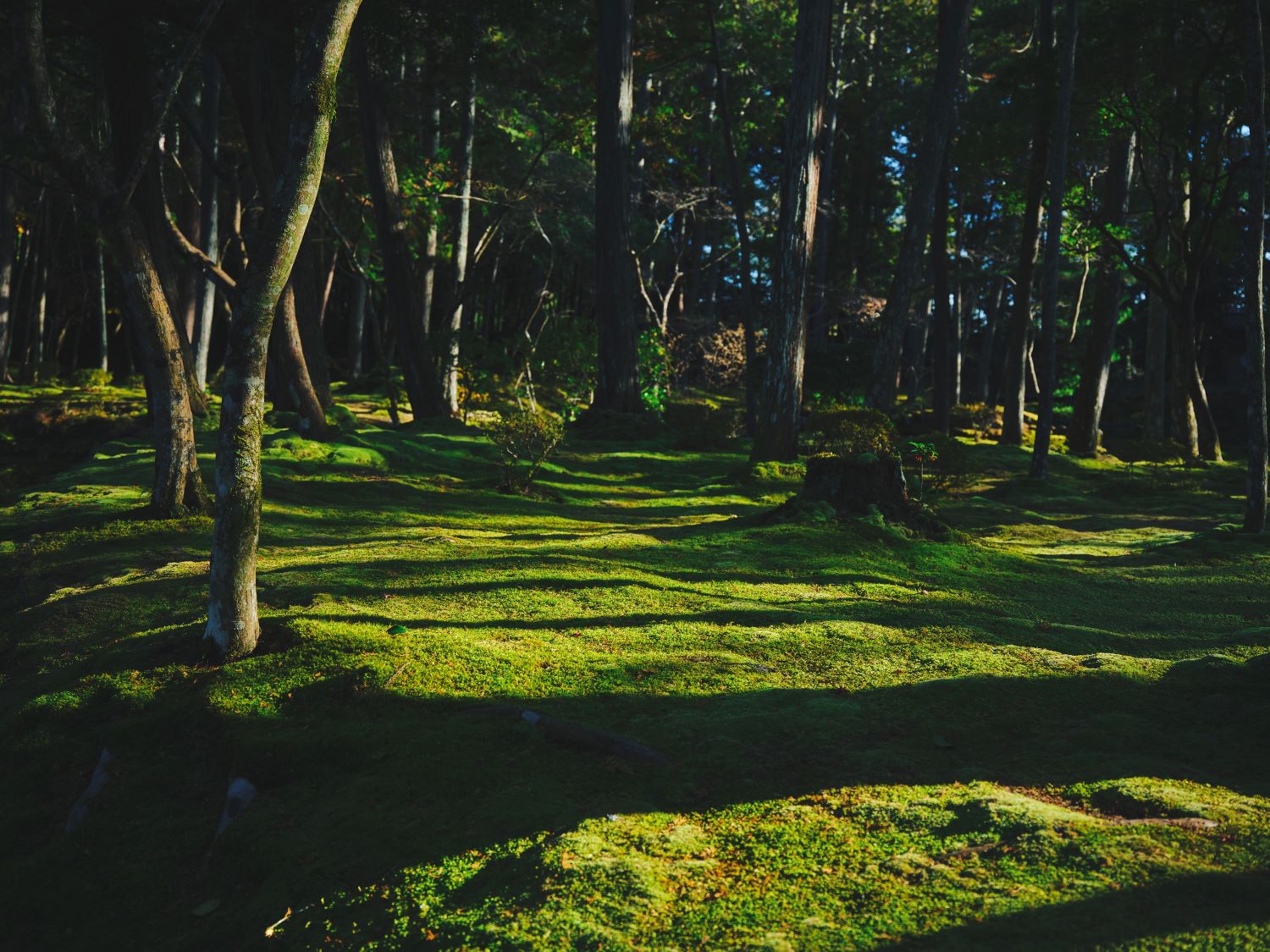2024.3.26
People Preserving Saihoji for Future Generations “Temple Carpenters”
Preserving Saihoji With the Heart and Skill of a Master Craftsman:
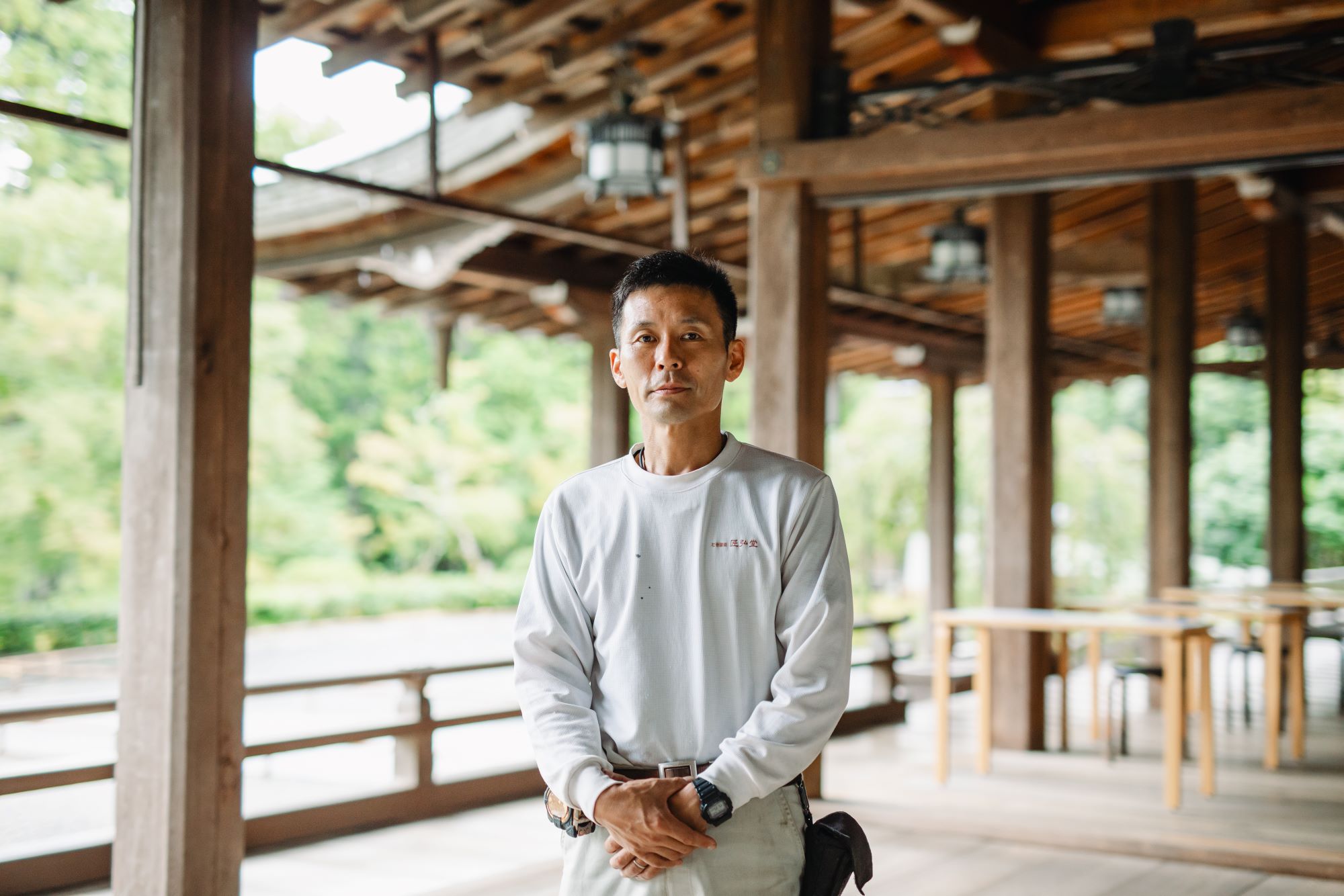
Saihoji Temple is known worldwide for its “Moss Garden.” In order to welcome visitors each day, many people support the temple and its garden with their expert work. In this series, we spotlight the work of those involved in Saihoji, and we will explore what it means to support culture and connect to history.
In this third installment we look at the miyadaiku* carpentry that goes into keeping the temple in shape, not only through repairs, building maintenance, and surveys, but also in the supervision of all aspects of construction-related work. We spoke to Arima Shigeru, the second-generation miyadaiku master carpenter of Shokodo, about the lessons he has learned and the insights he has gained through his work.
* Miyadaiku are carpenters who specialize in the building and maintenance of Buddhist temples and Shinto shrines and tea houses according to traditional Japanese carpentry techniques.
Arima Shigeru
Managing director second-generation miyadaiku master carpenter of Shokodo, Born in Fukuoka in 1973, Arima studied chemical engineering at Kitakyushu National College of Technology but decided to become a temple carpenter instead of an office worker following the Great Hanshin Earthquake in 1995. He trained under Okamoto Hiroshi, a master temple carpenter in Kyoto, and continues to follow his creed, vowing to “fully dedicate [him]self to temple and shrine architecture with all [his] strength, staying true to nature and the fundamentals, like a five-storied pagoda.” In his free time, he likes to play the tsugaru-shamisen.
“If I must take a new path, then I choose the most challenging one”
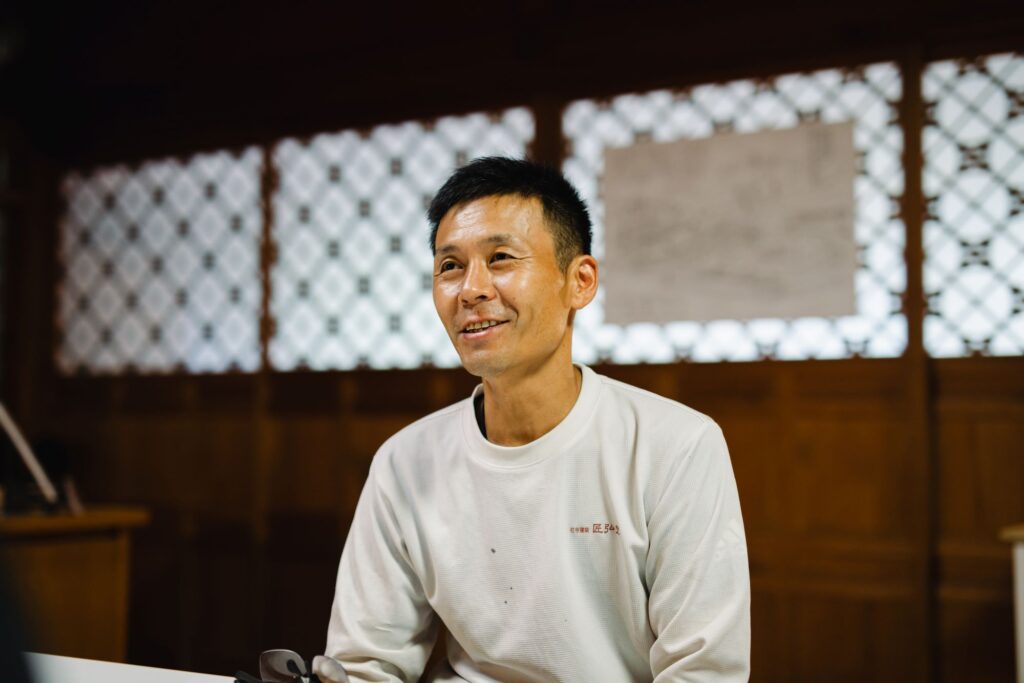
ー Please tell us about your work.
I work for Shokodo, a company that designs and builds shrine and temple structures. I’m the second-generation master carpenter, and we have around a dozen young carpenters on our staff.
As the master carpenter, I have a variety of responsibilities, starting, of course, with carpentry, but also including making building surveys, drafting repair plans, making cost estimates, procuring building materials, supervising construction, and training the younger carpenters. Now, you cannot truly understand what it’s like on a job site until you’ve actually been there with the other carpenters, working up a sweat together. It’s important to work on the site yourself, even if only for a short amount of time. When I work, I place a lot of importance on both making objective observations and thinking about things in a subjective way.
ー Have you always wanted to become a carpenter?
I have been interested in carpentry ever since I was a small child. Perhaps I was influenced by my environment growing up. My grandfather was a carpenter, while my father was a so-called weekend carpenter, doing carpentry as a hobby, so someone was always making something nearby. I for my part just wanted to work for a stable company and put my parents’ minds at ease, so after graduating from a technical college, I went to work at a logistics company.
However, no sooner had I started working there than the seeds of doubt began to germinate within me, and I felt like it would be difficult to stay there for the long term. I ended up leaving the company within a year. After I left the office job, I remembered the old dream I had abandoned as a child—to become a carpenter.
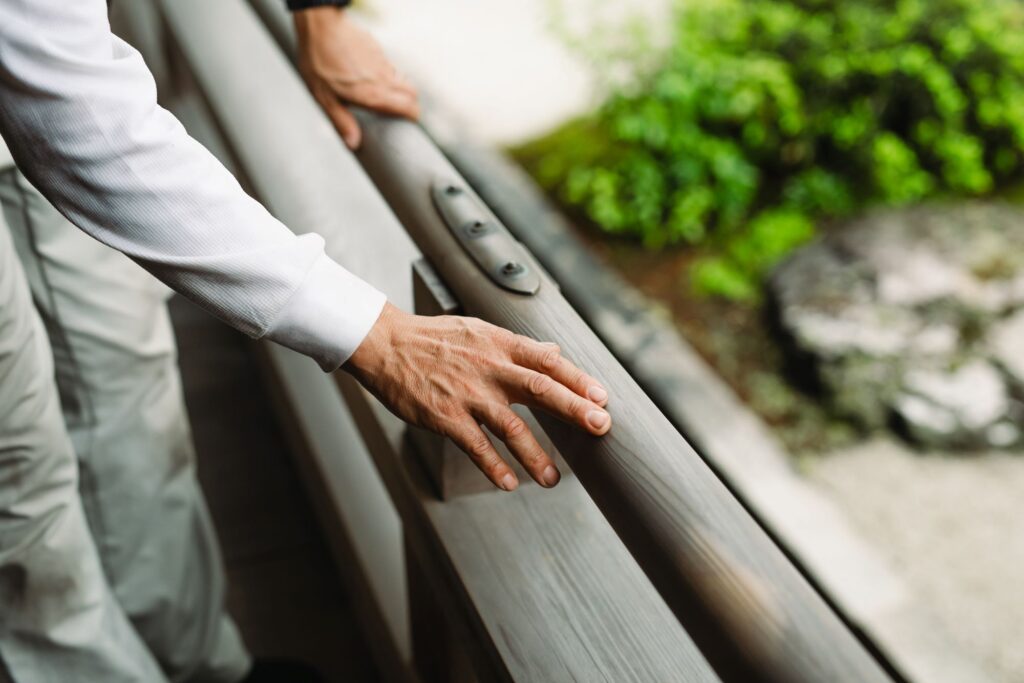
ー There are many different kinds of carpentry. What made you choose to become a temple carpenter?
I had heard that the work of a miyadaiku was the most difficult among all types of carpentry. I’m originally from Fukuoka, but I came to Kyoto because I saw it as the center of shrine and temple architecture. Now, if I must take a new path, then I want to choose the most challenging one. You could say my approach was to “swing for the bleachers,” and if it didn’t work out, I could still say I “went down swinging.”
That was about 30 years ago, so we had none of today’s conveniences like computers and smartphones. I took the slow and steady route to finding job openings, having job advertisements sent to me, calling public offices in Kyoto, and so on. I sent application letters to around 15 companies and decided to go to the first one that responded. It truly felt like I was casting my fate to the wind. The first place that responded to me was a construction company in Kyoto. A master carpenter by the name of Okamoto worked there. He would become my teacher before the founding of Shokodo.
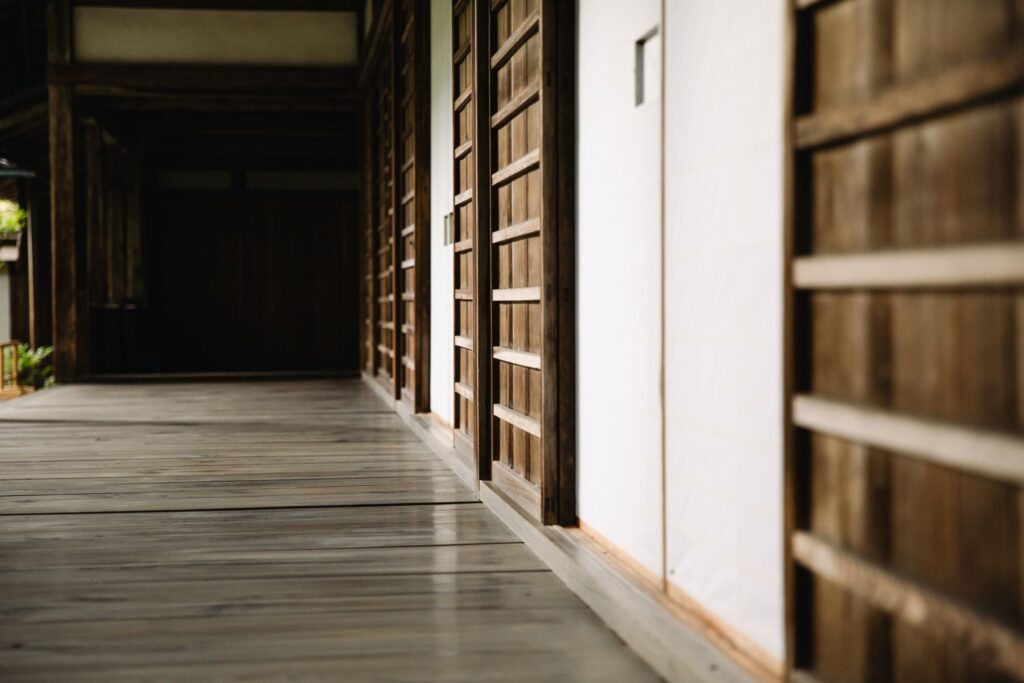
ー How did it feel to actually start working as a temple carpenter?
I started working as a miyadaiku right after the Great Hanshin Earthquake. The damage was immense, and I saw many buildings, shrines, and temples tilting heavily right before my eyes. They were held up only by ropes and cables, as if they were just barely holding on, awaiting the arrival of the carpenters. Some sites looked quite difficult to restore, and I would have given up, but Master Okamoto simply went ahead with the work using methods that would never even have crossed my mind.
At 21 years old, I was the youngest person in the company at the time. Master Okamoto was 62 years old and pondering aloud, “Maybe I’ll retire soon,” so I worked desperately every day, trying to learn as much as I could from this man while I still could.
In 1998, the construction company where I worked with Master Okamoto went under. In 2001, Master Carpenter Okamoto, the current president Mr. Yokogawa, and I decided to start Shokodo together. Master Okamoto passed away in 2015 at the age of 82, but his teachings live on within us.
Approaching construction projects as if they’re my own business
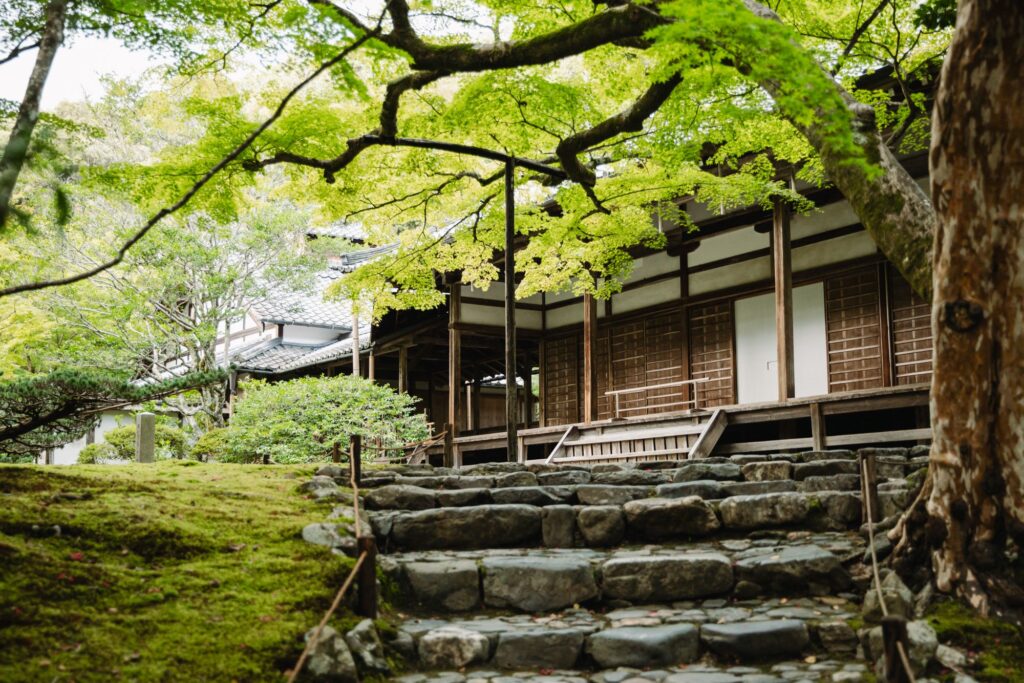
ー How far back does your relationship with Saihoji Temple go?
If I recall correctly, I first came to Saihoji as a temple carpenter around 2015. The Shoan-do tea house was damaged, and we were invited to discuss what should be done.
I knew that Saihoji Temple was famous for its moss, but this was my first time visiting. I was quite nervous at first, somewhat overwhelmed by the size of the temple grounds and its buildings. After making repeated visits for construction, I finally relaxed and began to take in my surroundings.
ー What were your impressions of Saihoji from the perspective of a temple carpenter?
Saihoji Temple seems to have both a noble severity and a soft atmosphere at the same time.
All of the buildings at Saihoji leave a gentle impression. I think it might be because the garden is the main feature of the temple, and the buildings have been designed to coexist with the garden. Among them, only the main hall has this commanding presence with a lot of focus on the thickness of the roof, so I think the landscape does a great job of balancing strong and weak features.

I also grew up in the countryside, where I spent a lot of my childhood playing in the forest. These formative experiences taught me that nature is delightful and beautiful in its original state, and I never developed a liking for overdeveloped landscapes. In this respect, I think the garden at Saihoji Temple offers a perfect harmony between the developed and untouched parts.

ー What feelings does the Saihoji garden awaken in you?
The moss is quite impressive, almost overwhelmingly so. I’m not a gardener, so I can’t tell if it’s good or bad, but you can really feel the energy it gives off. When it comes to cherry trees, I actually prefer them after the blossoms have gone. The lush energy of the new greenery reminds me of the feeling of taking a step forward. When you stand in the garden of Saihoji Temple, you can sense a powerful energy coming from above and below from both the trees and moss.
I think human beings have some of that energy as well. Without content or meaning—when there’s nothing there beneath the surface—words cannot hold any energy. Everyone who works at the temple is sharp and alert from the inside out. And so, whenever I come to work at Saihoji Temple, I also feel like I need to be on top of things, and more so than usual.

ー What kind of work have you done at Saihoji until now?
One of our big projects was to make repairs that went along with improvements to the sliding fittings in the Kyakuden reception hall (which is normally closed to the public). At first, we were asked to come and take a look at one of the sliding doors, because it was difficult to open. When we investigated further, we discovered that a pillar under the floor was about to break. This caused part of the floor to sink, making the door difficult to open. We went ahead, lifting each pillar one by one and adjusting the height so that we could carry out the repairs without taking down the heavy tiles, but as a result, it became quite a major undertaking.
There was another way to do it, namely by building more walls as seismic reinforcement, but we wanted to avoid that. It’s a very open building, and we wanted to preserve that openness.
The carpenter is not the lead actor. We must take into account the thoughts and feelings of the people who built the building or those who requested the repairs. We must consider what’s important to them. On top of that, doing construction work on a temple is, I believe, an indirect way of helping to protect the Buddha. No matter how big or small the job, I place great importance on approaching each construction project as if it were my own business.
ー Is there anything unique about working construction at Saihoji Temple?
Perhaps that the temple doesn’t hide the construction work. For example, if you see a construction project in town, the building site will usually be covered up with sheets. Saihoji doesn’t do that, with the idea being that the worksite can also be a part of the picture.
Being on such an open site inspires me to “show the work,” like when a sushi chef prepares the food before the customer’s eyes. With the eyes of the public on me, I feel a tension that’s not normally there, and I become more aware of my posture as I’m working, the way I put down my tools, and each movement I make. As I carry on in this way, more and more positive changes emerge.
Things change when you regulate yourself
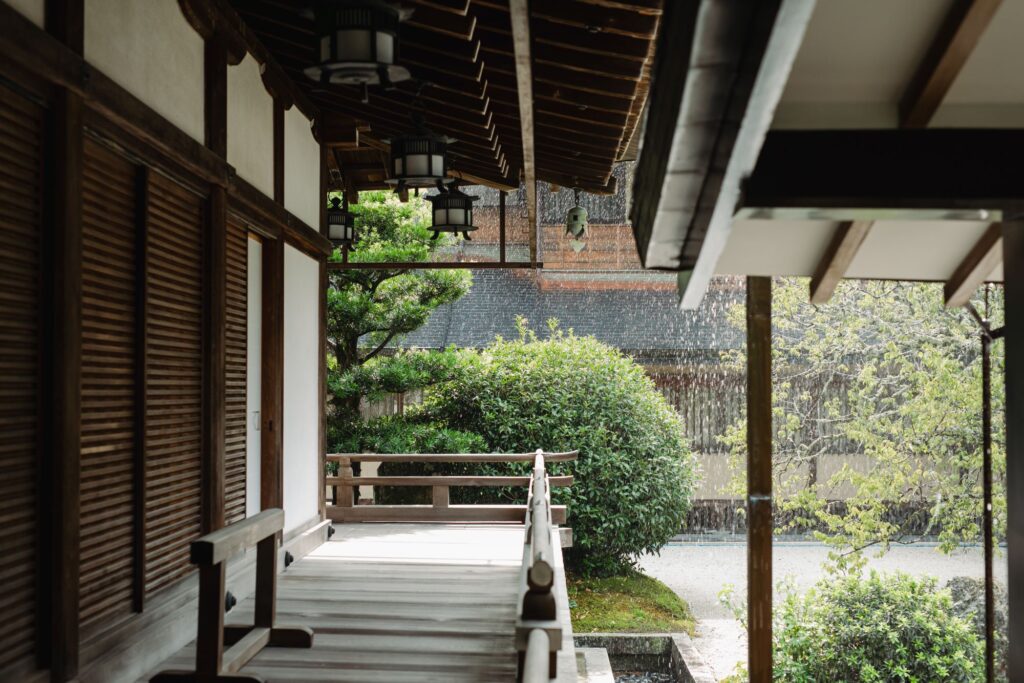
ー Why have you continued to work as a temple carpenter?
The work is simply fascinating and deep. As a temple carpenter, you have to learn about the different Buddhist sects and their teachings, where the tiles come from, and stories related to the local culture and atmosphere. I also enjoy the daily encounters I have with other people. I feel very fortunate to have a job where I have so many opportunities to meet such talented, wonderful people and to continually acquire new knowledge and skills.
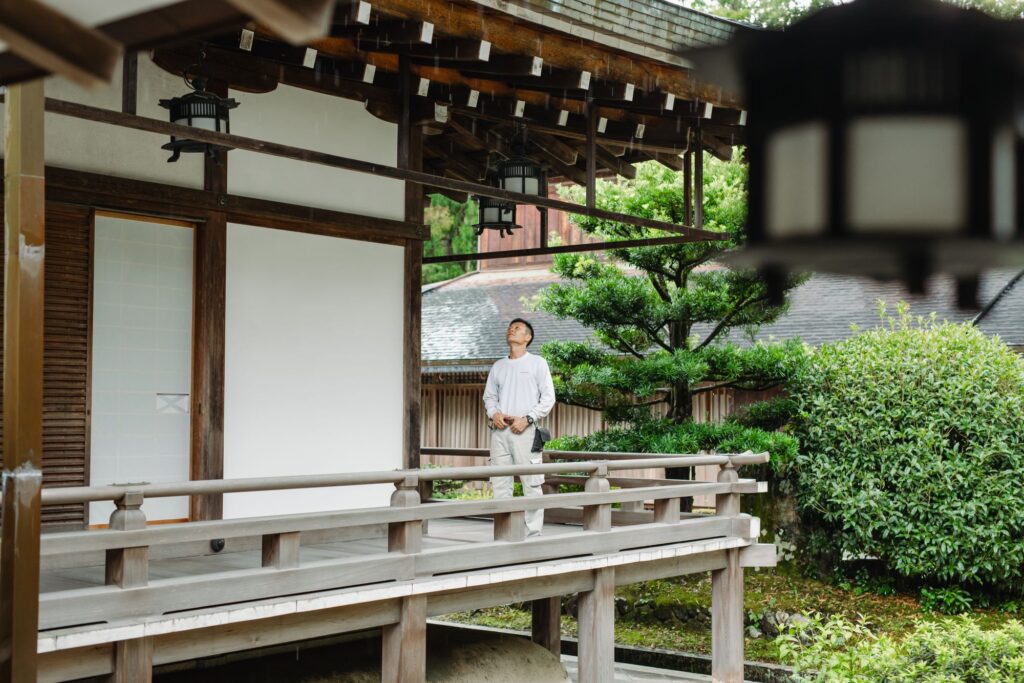
ー And that’s what makes it “fascinating.”
That’s right. Not only is the work fun and interesting, but we also place a lot of value on doing as much as possible by hand, without using power tools. We feel that adds a lot of satisfaction. You feel a completely different attachment to the wood when you work it by hand as compared to using machines. We’re working with our hands along the entire process, starting with cutting the logs, so the wood becomes like our own children.
Mechanization would certainly increase our efficiency, but it is still fun and interesting to do things by hand and learn one difficult technique after another. I think it is this enjoyable, stimulating, and rewarding aspect that has allowed me to continue working as a temple carpenter.
ー Finally, please tell us what you consider to be important in order to pass on your techniques and experience into the future.
We have many young carpenters at Shokodo, so I struggle daily with the question of how to teach them the craft. As the years go by, the conviction has grown within me that although it is important to impart the carpentry skills, it is even more important for me to teach them how to be decent human beings. I think it starts with the basics, and doing them thoroughly, such as greeting people and making yourself presentable. When you properly regulate yourself, it dramatically changes the skills and knowledge that you can gain.
Master Okamoto presented me with various challenges. There is a task called “inking,” which is where you mark the wood with the reference points for processing it later on. Usually, you’re not allowed to do that until you have 10 years of experience and 5 years at the earliest, but he left it up to me by the end of my first year. As the second master carpenter of Shokodo, I would like to create opportunities for the motivated young carpenters to take on new challenges. I hope to develop the next generation through my work and attitude.
Edited by: MIYAUCHI Toshiki, TAWARAYA Ryusuke
Written by: OGURO Keitaro
Photographed by: SHINSHI Misa
*These photos were with permission.
Up next
Most read
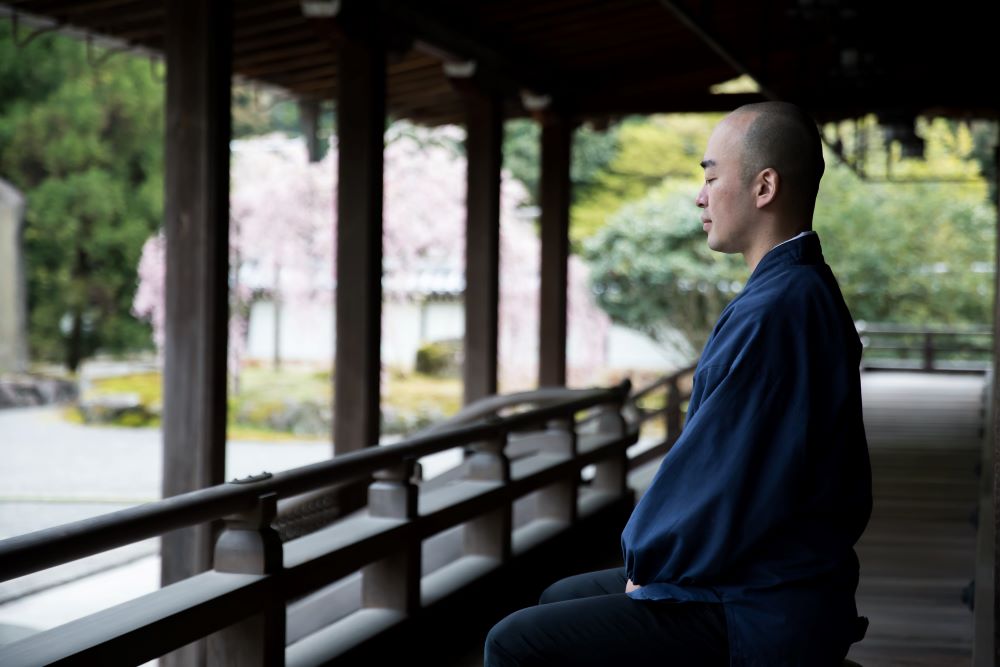
Your Heart
“The Concept of Muda”




